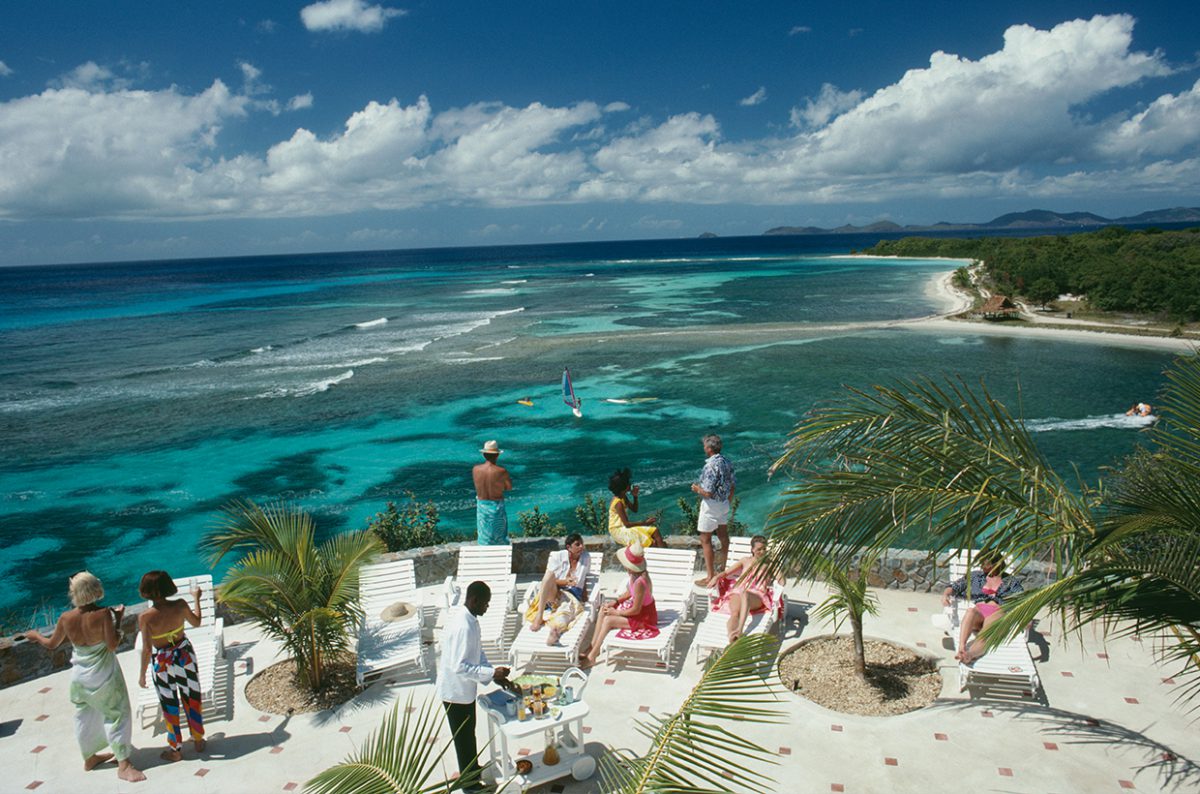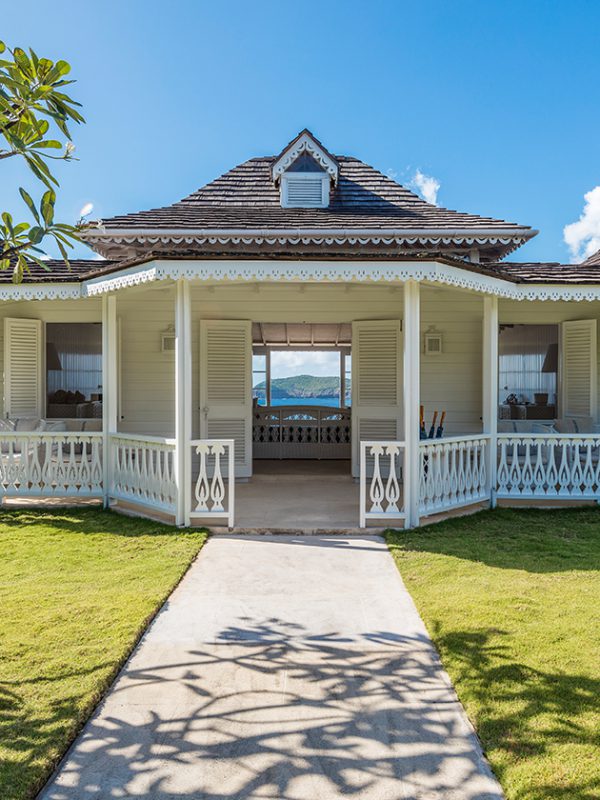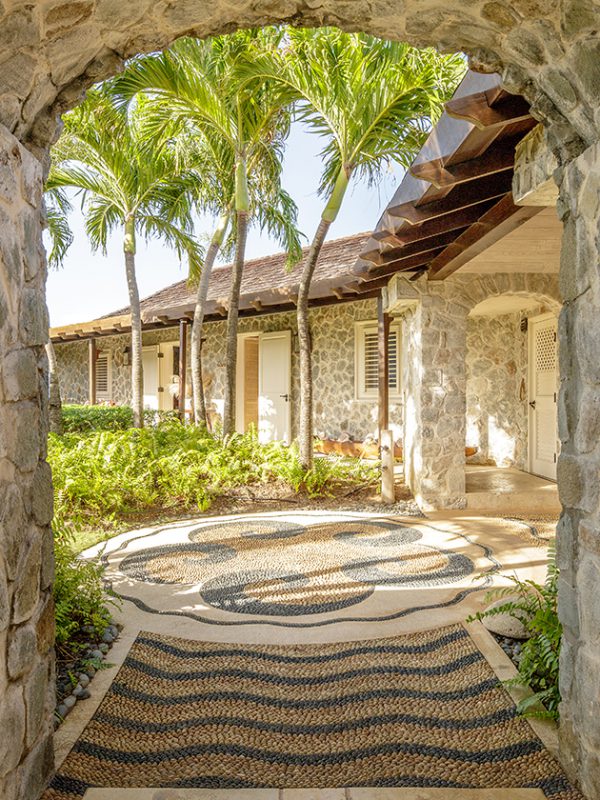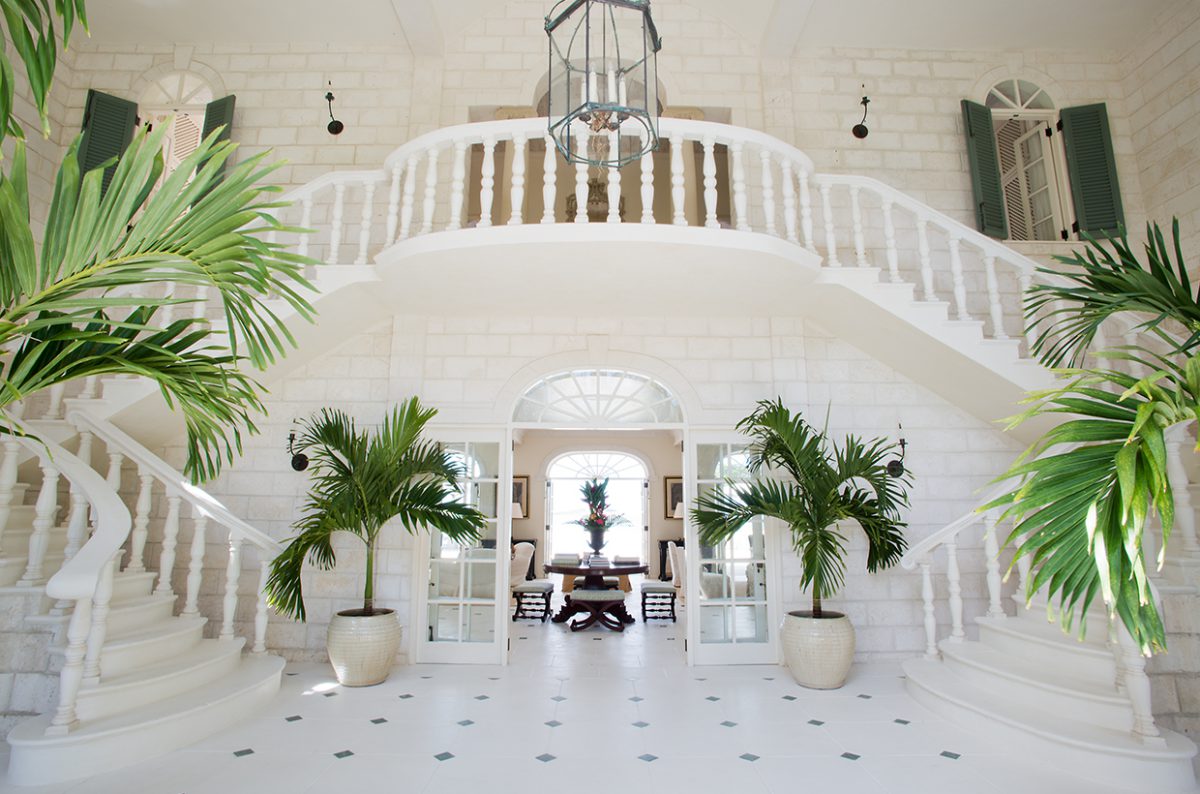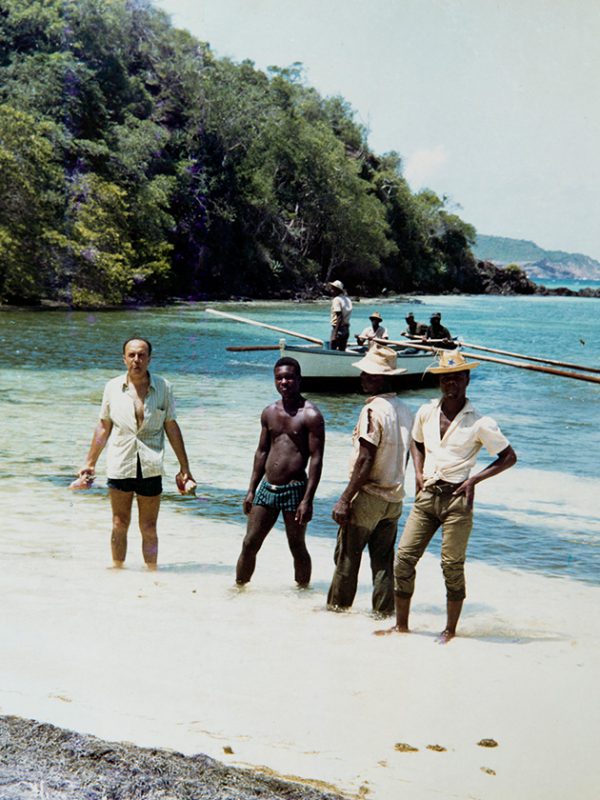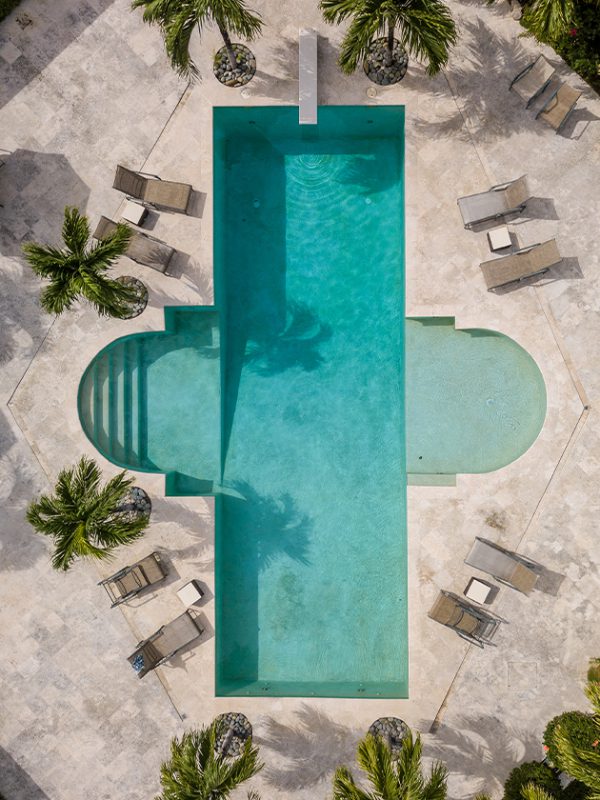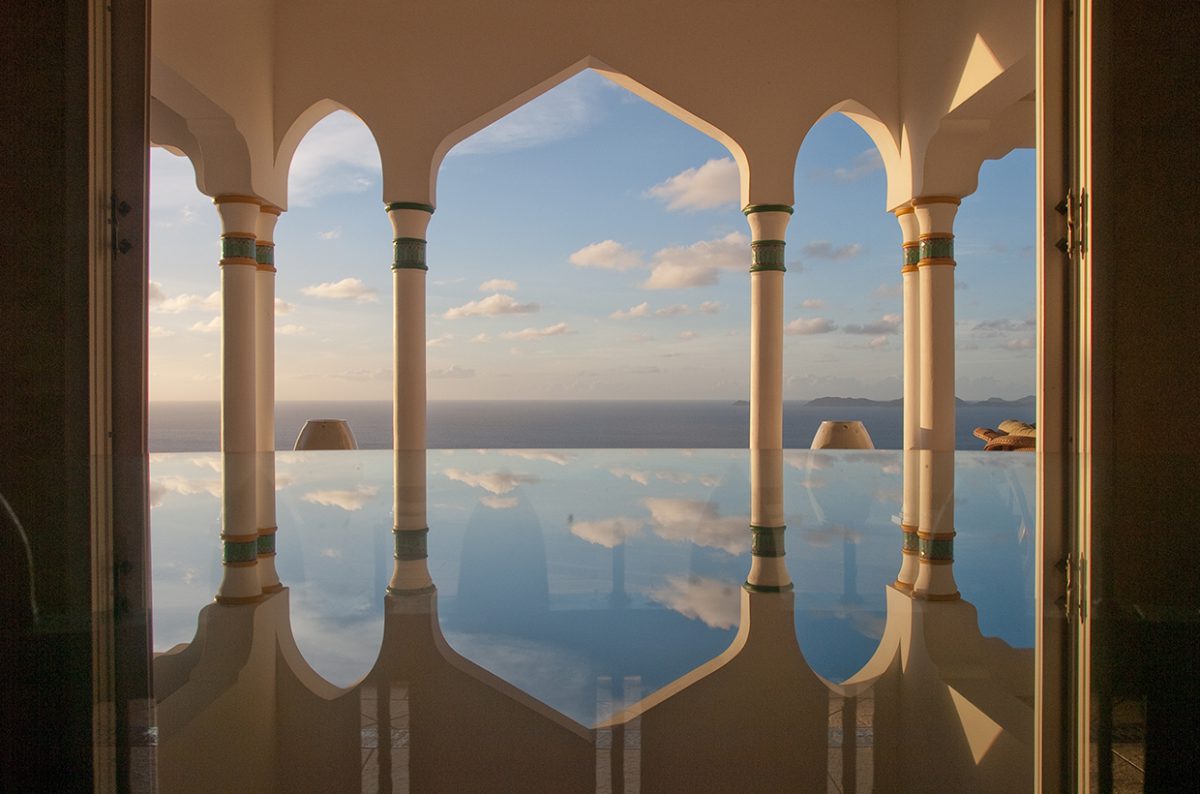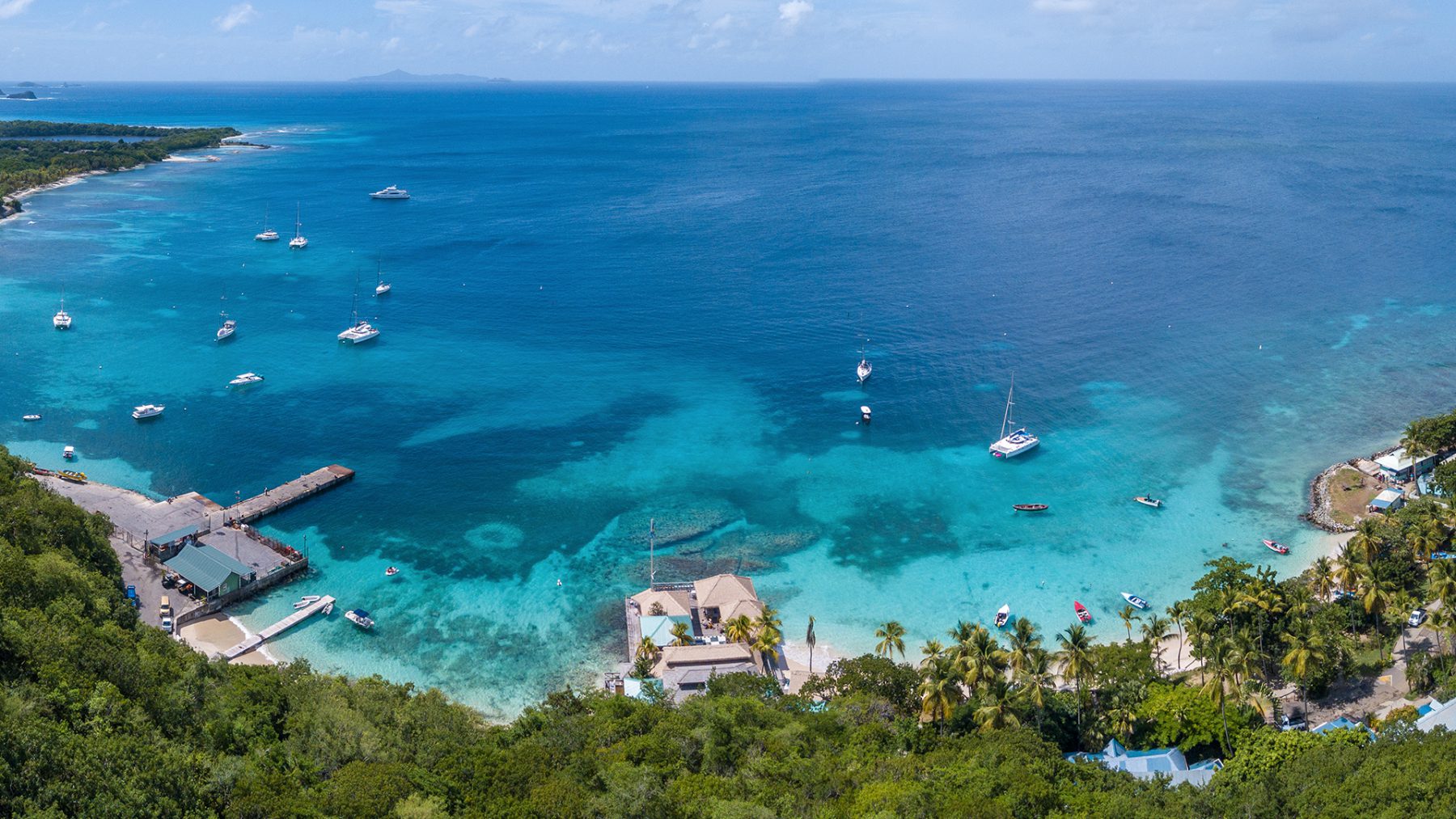Among Rock Stars & Royals by Dagmar von Taube | 6th March, 2020 | Personalities
If you’re here, it’s because you belong. That’s how it is on Mustique. The Caribbean island achieved royal fame when Princess Margaret was given a property and the Queen’s sister started to visit regularly. Roughly six square kilometers in area, the tiny island has no street signs, paparazzi, DJs or bustling nightlife. However, legendary parties abound.
“Would you like an Asprey cocktail shaker or a bit of Mustique as a wedding present?” COLIN TENNANT, 3RD BARON GLENCONNER
The view from the island hopper is a dream in turquoise. The colors have an intensity that would radiate out even from a black and white photo. The sea is so limpid that the fish in it seem to be swimming through the air. Even the translucent anemone shrimp are quite easy to spot. Luckily, the beach is so glitteringly white that the pilot knows exactly where to land. So after a twelve-hour trip from Europe, we finally arrive at a wooden hut and are greeted by Jeannette Cadet’s friendly hug. The 71-year-old islander has been welcoming visitors to Mustique for more than 30 years – Mick Jagger, David Bowie, Bill Gates, the Royals – and also knew Princess Margaret well. “She used to call from London to enquire: ‘Is my house de-scorpionized?’” Jeanette likes greeting her guests with a little joke: “I’m afraid we’ve been having terrible weather since yesterday.” Laughing, she serves us a drink of iced water.
It’s 28 degrees Celsius and we make our way in a golf cart from one hill to another, along bumpy paths and through a well kept tropical forest. The houses in it – some of them enormous properties – are hardly visible. Only the driveways and hedges give an indication of their splendor. Fifteen billionaires own vacation homes in Mustique, the total number of private villas is 105. Most of these can be rented by visitors and used as though they were private house guests. You shower, dream and live in the sanctuaries of industrialists and creative geniuses from around the world whose wealth was inherited or earned. You do not even need a key. The houses are not locked and the staff welcome you at the door.
Thirty-seven security guards keep watch over the island, and there is an arrivals list. Before guests even land, management know who they are, what they do and whether they are in trouble with a bank or a government. Mustique boasts two hotels, two beach cafés and two bars, but the majority of socializing is done in private. The people who reside behind those hedges have known each other for ages. Everyone knows who lives in which house, so there’s no need for street signs. It’s like an exclusive private club. People here enjoy being part of this elite community and take steps to keep it unique. Money talks, wealth whispers.
It all started with Colin Tennant, the 3rd Baron Glenconner, in 1958. The eccentric son of an English large landowner sailed past the island on his way back from Trinidad. At the time, there was nothing in Mustique but cotton plants, coconuts and mosquitoes. He fell in love with the shrub-covered island and purchased it for £45,000. The cotton was made into pajamas, which he had a hard time selling in London, though. This gave him the idea of livening up the island by giving away plots of land to his friends and asking them to bring their entourages – but only the good-looking ones! Princess Margaret was among the first. “Would you like an Asprey cocktail shaker or a piece of Mustique?” he asked his friend when she was getting married to Lord Snowdon in 1960. The Princess summed up her first impressions of the island, gained from her yacht during her honeymoon, with characteristic frankness: She was disappointed. “It looked like Kenya, burnt to a frazzle. We drove down a path, the only road, and sat in the brush swatting mosquitoes. It was only really bearable underwater.” Colin’s parties, however, were riotous and legendary, so rock stars, bohemians and aristocrats made their way to the island that is the stuff of legends to this day.
Roger Pritchard is sitting in his office. The Briton is a master relationship builder. Urbane and discreet, he is not one to betray any confidences. “Ah, good old Colin,” he laughs gruffly, sipping his breakfast tea. “He was not just the founder of Mustique, but also shaped it with his personality. However, he wasn’t a skilled financier or businessman.” When a road needed to be built, he sold one of his paintings. The food supply chain was chaotic. When the female guests blow-dried their hair while getting ready for cocktail hour, there would be a blackout and the whole island would be plunged into darkness. At some point, people had had enough and demanded decent management. This led – fifty years ago – to the founding of the Mustique Company, which is today headed by Roger Pritchard.
His job is to take Mustique into the future, to preserve its charm while helping it evolve. And to open it up to the next generation, to a new clientele, because times are changing. It is a balancing act. As the Prince of Lampedusa wrote in his book The Leopard: “Everything must change so that everything can stay the same.” So who will be a part of tomorrow’s Mustique? Soccer champions, young fashionistas or Silicon Valley techies? Maybe the Kardashians, Middle Eastern or Chinese business people or astronauts? It’s all about choosing wisely, as the island’s balance is easily disturbed. Roger says: “You must curate carefully.”
Imelda Marcos once wanted to buy a property here – and was rejected. Attempts by Roman Abramovich to acquire the villa Great House formerly owned by the late Lord Glenconner (and now the property of fashion tycoon Lawrence Stroll) also failed, even after the Russian oligarch doubled his offer. They are trying to preserve the old spirit. Forty percent of owners are British, with the rest made up of Americans, Venezuelans, Italians and Swiss, as well as three German families. “We wouldn’t mind a broader mix or even a larger number of visitors throughout the year,” Roger says. The villa owners are always looking for tenants. “Inflation,” he mutters. A young entrepreneur from a small European country who has asked for his name to be withheld is cooling down with a “Mustique Mule” in a silver mug on his spacious white patio. “We have been coming here for years. From Christmas to New Year’s Day, our house is cozily occupied by twelve people, friends and family. But the rest of the time it’s empty. The humidity damages the furniture, the upholstery gets musty and the staff are out of work.” Just one overnight stay will set you back roughly 2,000 euros. His wife points out that they are selective with their guests: “Once we had these hedge fund people staying here. One of them immediately threw a party for 200 people and our sofas ended up covered in sunscreen and banana chips. Sure, at this daily rate, you probably can’t be too sensitive, but you should at least be able to expect some manners.” These are island worries, it’s not easy pleasing everybody.
The “newer people,” as Roger calls them, want action, sushi, shops, clubs, golf and ample lighting in the forest. Others don’t want any changes at all. “I wouldn’t rule out anything offhand,” says the boss. One thing is for certain, though: “Private jets will only land here over my dead body. I don’t want the noise. On top of that, who knows what or who they’d bring onto the island.” Tourists can book a room in the Cotton House hotel or simply in one of the 84 houses that are available for rent. Everything is big at the villa Palm Beach, which is owned by designer Tommy Hilfiger: It has gigantic beds in huge bedrooms that boast panoramic views of the vast ocean at L’Ansecoy Bay. The Plantation House (always rented by Tom Ford) has patios as big as ballrooms, and its pool seems to merge with the sea behind it. In Patrick Lichfield’s villa Obsidian, designed in the typical gingerbread colonial style inspired by stage designer Oliver Messel, there’s lots of wicker furniture. In Les Jolies Eaux, Princess Margaret’s former residence, all the interiors used to be peach-colored.
